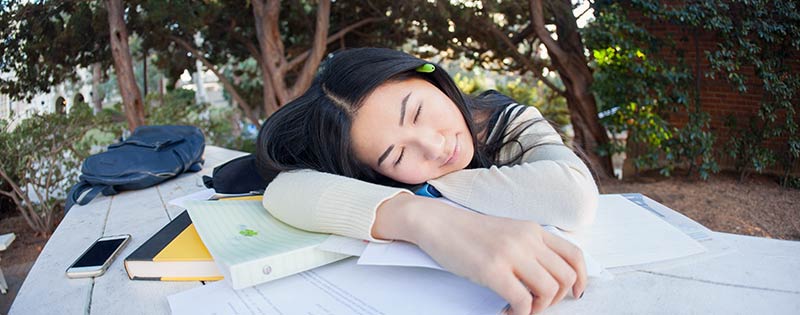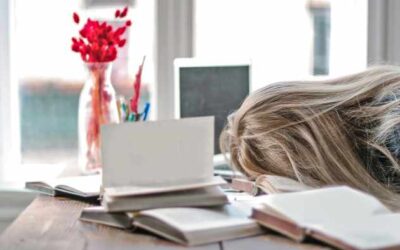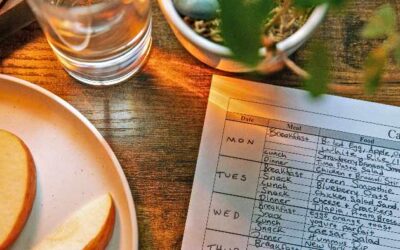by Brent Hearn •
You’ve just finished your lunch, and you’re sitting back at your desk. The afternoon stretches ahead of you like an endless highway, but no matter—you’re a bastion of productivity. Emails? You’ll answer ‘em! Meetings? You’ll crush ‘em! Reports? They don’t stand a chance! You crack your knuckles, settle in, and…15 minutes later, you catch yourself nodding off. “Wow, what I wouldn’t give for a nap right now,” you think.
What gives?
It’s complicated. Jonesing for a nap doesn’t mean you’re lazy. It’s not even necessarily a sign of sleep deprivation (though it can be). There are many positive benefits to napping, but there’s a caveat. You need to nap the right way. If you’re looking to bone up on some daylight downtime, right this way!
Why Do You Feel the Need to Nap?
Though the typical American workday assumes a consolidated sleep schedule, we’re actually wired to experience intense sleepiness twice a day: once in the early morning hours and once in the afternoon. So that post-lunch dip you feel isn’t just a bout of midday boredom or a result of going too hard at the buffet; it’s a part of your natural sleep rhythm.
That said, there’s a need to distinguish between an afternoon downtick in alertness and an inability to stay awake. There’s a big difference between “A nap would do me some good” and “I literally cannot keep my eyes open.” The latter could point to sleep deprivation or—if you’re getting what should be enough quality shuteye at night—possibly a larger issue (a sleep disorder, a medical condition, a medication side effect, etc.) that needs to be addressed by a doctor.
How Long Should You Nap?
This is where things get interesting. The length of your nap can be the difference between feeling refreshed and feeling even more groggy, and the key lies in waking up at an appropriate time during a sleep cycle.
Although it’s not ideal, a nap as short as five minutes can be effective. In that amount of time, your body begins to shift from stage one to stage two of sleep, and even that short snooze can help to decrease drowsiness and kickstart your memory.
A nap lasting from 20 to 30 minutes can work wonders, as you’ll enter a full relaxation state. The key is not to enter stage three sleep, the part of the cycle we tend to think of as “deep” sleep. If you enter that third stage but don’t complete it, you can experience sleep inertia, which is what can make you feel groggy and sluggish. (No one likes to wake up from a nap feeling worse than they did before they dozed off.)
Around sixty minutes is another nice length for a nap, as you’ll be moving out of the repair/recharge mode of deep stage-three sleep—replete with brain-boosting benefits such as improved recall and learning as well as general cognitive function—and into REM (short for rapid eye movement) sleep.
And finally, if you really want to power down, you can opt for a 90-minute nap, which is roughly the length of a full sleep cycle. Don’t go any longer than 90 minutes, though. Snoozing for more than an hour and a half can sabotage your nighttime sleep hygiene, brain function, and memory retention.
Closing Thoughts
Napping isn’t for everybody. And even if it is, remember everyone’s body is a little different, so you’ll have to experiment with where your napping sweet spots are.
Just as with nighttime sleep, quality matters. Darkness, a cool temperature, and quiet (or a sound machine if quiet isn’t an option) are your friends.
If you know you’ve got a long stretch of time ahead of you when you won’t be able to sleep (a long drive or a late shift at work, for instance) consider napping beforehand.
Find what works for you, and if the midday sleepies strike—and you’re able to do so safely and within the constraints of your work schedule—happy napping!
SOURCES:
The Healthy: Here’s How Long the Best Nap Lasts, a NeuroScientist Says
The Guardian: Napping: the expert’s guide
Mayo Clinic: Napping: Do’s and don’ts for healthy adults
Insider: How long should I nap? Why 20 to 30 minutes is best, and longer naps can leave you more tired









 ▶︎
▶︎  Why is the Discount Challenge prize amount $15,024? Because that is the average “per-occurrence” fine for Medicare inducements. That’s not $15,024 per patient, that’s not per provider, that’s PER VISIT. Stinks, doesn’t it? To us, the prize amount is worth the investment if we can help our profession better understand proper discounting.
Why is the Discount Challenge prize amount $15,024? Because that is the average “per-occurrence” fine for Medicare inducements. That’s not $15,024 per patient, that’s not per provider, that’s PER VISIT. Stinks, doesn’t it? To us, the prize amount is worth the investment if we can help our profession better understand proper discounting.